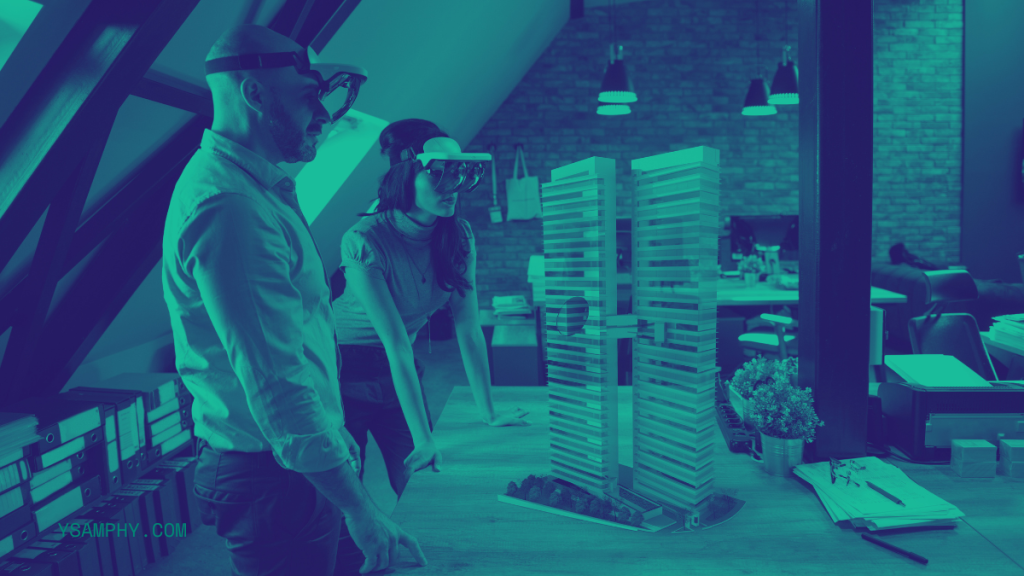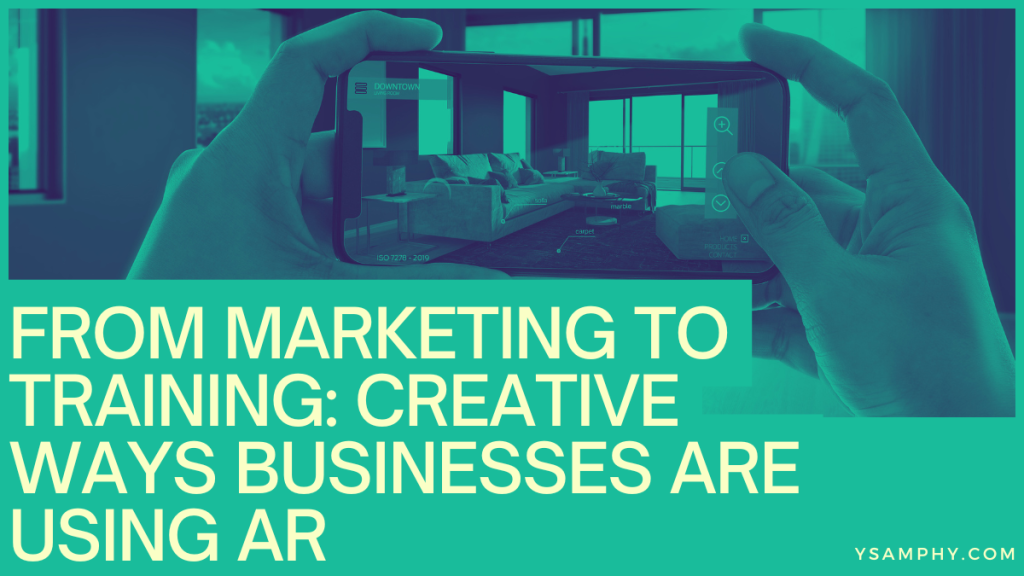Augmented reality (AR) is no longer a futuristic concept; it is a technology being adopted across industries in innovative ways. What started as a novelty in gaming has now transformed into a powerful tool that businesses use to enhance customer engagement, streamline operations, and improve training processes. AR blends digital elements with the real world, creating interactive experiences that are both informative and immersive. As companies continue to explore its potential, AR is revolutionizing everything from marketing strategies to employee training, helping businesses achieve greater efficiency and creativity in their operations.

Enhancing Marketing Campaigns with AR
Marketing has always been about capturing the attention of potential customers and conveying a brand’s message in a unique way. With custom augmented reality solutions, companies can take marketing campaigns to a whole new level. Instead of merely showing customers an ad or a product, AR allows them to experience it in real time. For example, cosmetic brands have launched apps that allow users to virtually try on makeup before purchasing, giving customers the confidence to buy products online. This interactive shopping experience not only improves customer satisfaction but also increases sales conversions.
Retailers are using AR to transform the in-store experience as well. Virtual fitting rooms let customers “try on” clothing without actually changing their clothes. This technology reduces the friction that can occur during the shopping process and helps stores minimize returns due to incorrect sizing. AR marketing is especially popular during events or product launches, where customers can scan QR codes or use apps to interact with augmented environments that tell a brand’s story.
Revolutionizing Product Design and Prototyping
In industries where product design is key, AR has become an invaluable tool. Traditionally, creating prototypes is time-consuming and costly. Engineers, designers, and manufacturers must go through multiple iterations before a final product can be launched. Augmented reality, however, streamlines this process by enabling designers to visualize products in 3D before physical prototypes are created. For example, car manufacturers use AR to build digital models of vehicles, making it easier to test features, modify designs, and identify issues before production begins.
This real-time visual feedback also improves collaboration between teams. With AR, stakeholders from different departments can view the same model from various perspectives, making communication more efficient and reducing the risk of errors. This technology eliminates the need for expensive physical prototypes in many cases and speeds up the development cycle, allowing companies to bring products to market faster. When companies integrate AR into their product development process, they gain a significant competitive advantage by increasing design flexibility and reducing production costs. AR makes it possible to test products in virtual environments that mimic real-world conditions, ensuring better performance once the product is launched.
Streamlining Employee Training
Training employees, particularly in technical fields, has historically been a challenge for many businesses. Traditional training methods can be expensive, time-consuming, and often not as effective as they should be. With AR, businesses can transform training processes into interactive and highly engaging experiences. Augmented reality allows employees to practice real-world scenarios in a controlled, risk-free environment.
For example, in the healthcare industry, AR is used to train surgeons by simulating surgeries and other medical procedures. Trainees can interact with virtual tools, practice complex procedures, and receive real-time feedback without the risk associated with actual surgeries. Similarly, AR is revolutionizing training in industries such as aviation and manufacturing, where employees can practice operating complex machinery in a virtual environment before stepping into the real world. The immersive nature of AR makes training more engaging and ensures that employees retain information more effectively.
Enhancing Customer Support and Troubleshooting
AR is also being utilized to improve customer support and troubleshooting services. Traditional customer support, whether over the phone or through live chat, has its limitations. AR, on the other hand, allows customers and support agents to interact in real-time through shared augmented environments. For instance, customers can use their smartphones to show support agents exactly what issue they are facing with a product. The agent, using AR, can provide visual guidance on how to resolve the problem, reducing the need for returns or on-site visits.
This technology is particularly useful in industries like tech support or home maintenance. Instead of relying on verbal descriptions, which can lead to misunderstandings, AR lets the support agent “see” what the customer sees and guides them step by step in resolving their issue. This not only improves customer satisfaction but also reduces the time and cost associated with traditional troubleshooting methods.
Innovating in Retail and E-commerce
Retail and e-commerce businesses are constantly seeking ways to offer more personalized and engaging experiences to their customers. AR is a perfect solution, offering a digital twist to traditional shopping. AR apps allow customers to visualize products in their own environment, whether it’s furniture in their living room or a painting on their wall. This interactive experience eliminates much of the uncertainty that comes with online shopping, leading to more informed purchase decisions.
In the world of e-commerce, AR is used to bridge the gap between the physical and virtual shopping experience. Online shoppers can use AR to “try on” clothes, shoes, or accessories, ensuring that the product is exactly what they are looking for before they make a purchase. This reduces returns and enhances customer satisfaction, making AR an essential tool in the modern retail landscape.
Transforming Real Estate and Architecture
Real estate and architecture are other sectors reaping the benefits of AR technology. Potential homebuyers and tenants can use AR apps to take virtual tours of properties without stepping foot inside them. These virtual tours allow clients to explore every room, change layouts, or even see potential renovations in real time. This not only enhances the buyer’s experience but also saves real estate agents and developers time by reducing the number of physical viewings needed.
Architects and builders also use AR to visualize how a structure will look in a particular environment before it’s built. By overlaying digital blueprints onto real-world sites, architects can assess how a building will interact with its surroundings and make necessary adjustments early in the design phase. This capability improves accuracy, reduces construction delays, and helps clients better understand the final outcome.

The rapid growth of augmented reality technology is opening up endless possibilities for businesses across industries. From revolutionizing marketing campaigns and streamlining product design to transforming employee training and customer support, AR is proving to be a versatile tool that can enhance almost every aspect of business operations. As companies continue to adopt AR, we will see even more creative applications of this technology that will drive efficiency, engagement, and innovation. Those who embrace AR early will not only stand out from their competitors but will also be better positioned to meet the evolving needs of their customers and employees.

